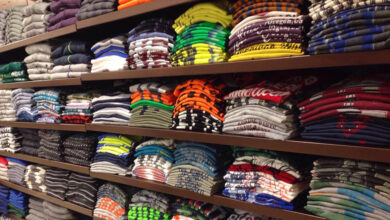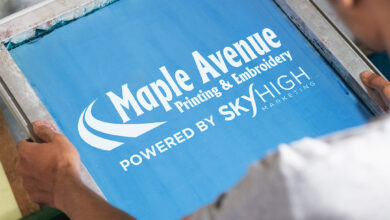Just like other types of fabrics, nylon comes in different weaves, which have different uses and provide different challenges when it comes to screen printing. All types of nylon tend to be woven rather than knit, which changes the way ink sits on the fabric.
- Taffeta. Taffeta is a basic weave of nylon fibers, where the fibers of nylon are alternately woven together in a lattice formation. Taffeta is a tight, dense weave meaning the material is stable and smooth, which allows for clean screen prints. Taffeta is popularly used for lined and unlined jackets, umbrellas, banners, and lightweight tote bags.
- Satin. Satin offers a smooth, shiny finish. This is an irregular weave in which one fiber of material passes over four fibers, then under one fiber. Satin is most often used for jackets, but it is occasionally used for other substrates.
- Oxford. Oxford is a heavy basket weave, in which double rows of fiber pass over and under one another. It creates a rough texture popularly used for athletic jackets, luggage, tote bags, banners, and flags. The rough surface of the Oxford weave needs a thicker deposit of ink for an even print, and it can create a jagged edge to your artwork.
—Anatol Equipment



